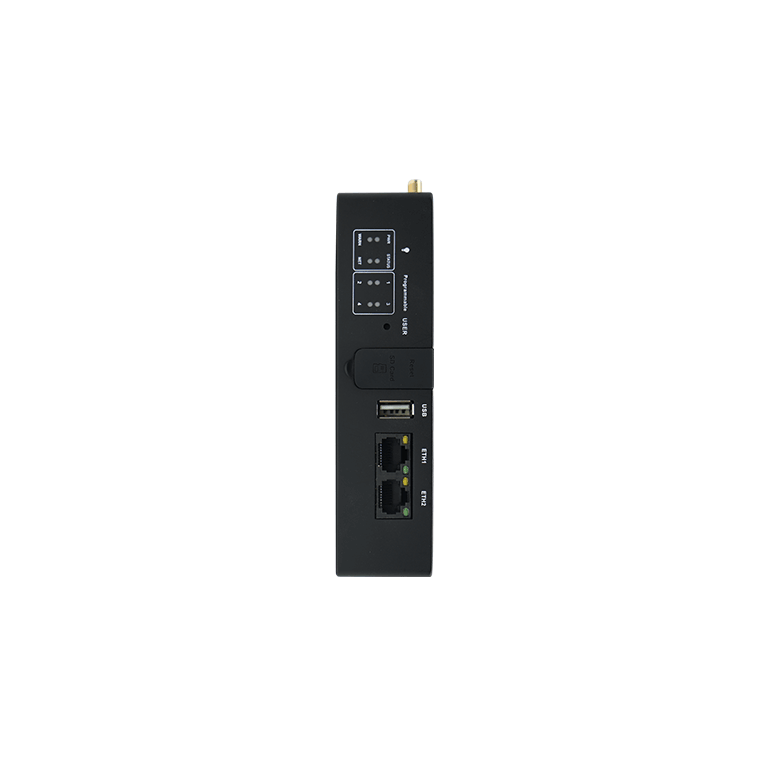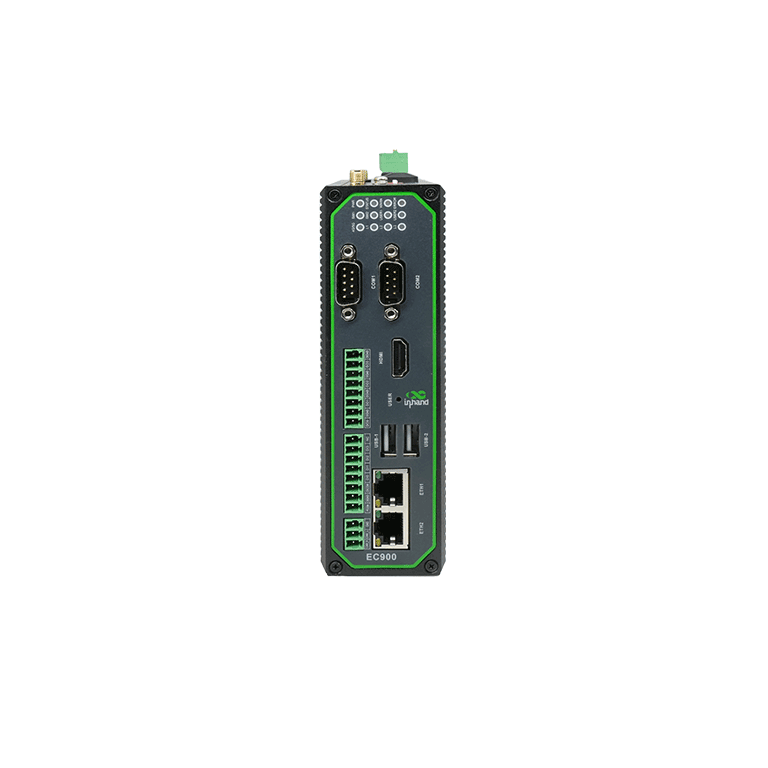
Da sich das Internet der Dinge (IoT) immer weiter ausbreitet, ist die Gewährleistung der Sicherheit und Integrität der angeschlossenen Geräte von entscheidender Bedeutung. Secure Boot ist eine Schlüsseltechnologie zum Schutz dieser Geräte. In diesem Artikel gehen wir auf die Bedeutung dieser Technologie für das IoT-Edge-Computing ein und zeigen ihre Vorteile, Anwendungen und Implementierungsstrategien auf.
Was ist Secure Boot?
Sicherer Start ist ein Sicherheitsstandard, der sicherstellen soll, dass ein Gerät nur mit Software gebootet wird, die vom Original Equipment Manufacturer (OEM) als vertrauenswürdig eingestuft wurde. Während des Bootvorgangs überprüft Secure Boot jede einzelne Boot-Software, einschließlich der Firmware-Treiber (Option ROMs), der EFI-Anwendungen und des Betriebssystems. Wenn die Signaturen gültig sind, bootet das Gerät und die Firmware übergibt die Kontrolle an das Betriebssystem. Wenn die Signaturen ungültig sind, bootet das Gerät nicht.
Die Bedeutung von Secure Boot
Sicherstellung der Systemintegrität
Secure Boot stellt sicher, dass nur authentifizierte und zugelassene Software auf einem Gerät ausgeführt wird, und verhindert die Ausführung von nicht autorisiertem und potenziell schädlichem Code.
Schutz vor Malware
Durch die Überprüfung der Authentizität des Bootloaders und anderer kritischer Softwarekomponenten hilft Secure Boot, Systeme vor Bootkits und Rootkits zu schützen, die in IoT-Umgebungen besonders schädlich sein können.
Verbesserung der Sicherheit in IoT-Geräten
IoT-Geräte werden oft in unkontrollierten Umgebungen eingesetzt, was sie anfällig für physische und Remote-Angriffe macht. Secure Boot bietet einen robusten Mechanismus zur Wahrung der Integrität dieser Geräte.
Wie funktioniert Secure Boot?
Schlüsselkomponenten von Secure Boot
1. Plattformschlüssel (PK): Die PK wird verwendet, um den Bootloader zu signieren und zu verifizieren.
2. Schlüsselaustausch-Schlüssel (KEK): Diese Schlüssel verwalten die Datenbank der vertrauenswürdigen digitalen Zertifikate.
3. Datenbank für zulässige und verbotene Signaturen: In diesen Datenbanken werden die digitalen Signaturen von vertrauenswürdigen (autorisierten) und nicht vertrauenswürdigen (verbotenen) Bootloadern und anderer Software gespeichert.
Sicherer Boot-Prozess
1. Initialisierung: Wenn ein Gerät eingeschaltet wird, beginnt die Firmware den Secure-Boot-Prozess, indem sie die PK überprüft.
2. Überprüfung: Die Firmware verifiziert den Bootloader anhand des KEK und der Signaturdatenbanken.
3. Ausführung: Wenn die Überprüfung erfolgreich ist, wird der Bootloader ausgeführt. Wenn nicht, wird der Bootvorgang angehalten.
Anwendungen von Secure Boot im IoT Edge Computing
Absicherung von Edge-Geräten
Beim IoT-Edge-Computing verarbeiten Geräte am Netzwerkrand Daten lokal, bevor sie sie an den zentralen Server übermitteln. Secure Boot stellt sicher, dass diese Geräte sicher booten und die Integrität der Datenverarbeitung gewahrt bleibt.
Verbesserung der Edge-Sicherheitsinfrastruktur
Secure Boot stellt sicher, dass nur authentifizierte Software auf Edge-Geräten ausgeführt wird, und stärkt so die gesamte Sicherheitsinfrastruktur, indem es unbefugten Zugriff und Datenverletzungen verhindert.
Einhaltung von Sicherheitsstandards
Viele Branchen haben strenge Sicherheitsstandards für IoT-Geräte. Die Implementierung von Secure Boot hilft Unternehmen bei der Einhaltung dieser Standards und gewährleistet, dass ihre Geräte sicher und vertrauenswürdig sind.
Implementierung von Secure Boot im IoT Edge Computing
Firmware-Konfiguration
Die Konfiguration der Firmware zur Unterstützung von Secure Boot erfordert die korrekte Einrichtung der PK-, KEK- und Signaturdatenbanken.
Software-Signierung
Stellen Sie sicher, dass alle Softwarekomponenten, einschließlich des Betriebssystems und der Anwendungen, mit vertrauenswürdigen Zertifikaten signiert sind.
Regelmäßige Aktualisierungen und Überwachung
Aktualisieren Sie regelmäßig die Firmware und Software, um einen kontinuierlichen Schutz vor neuen Bedrohungen zu gewährleisten. Überwachen Sie die Geräte auf Anzeichen von unbefugten Versuchen, Secure Boot zu umgehen.
Vorteile von Secure Boot im IoT Edge Computing
Verbesserte Sicherheitsposition
Secure Boot verbessert die Sicherheitslage von IoT-Edge-Geräten erheblich, indem es gewährleistet, dass nur vertrauenswürdige Software ausgeführt wird.
Geringeres Risiko von Cyberangriffen
Secure Boot verhindert die Ausführung nicht autorisierter Software und verringert so das Risiko von Cyberangriffen, einschließlich Malware, Ransomware und anderen bösartigen Aktivitäten.
Erhöhtes Vertrauen und Verlässlichkeit
Die Implementierung von Secure Boot schafft Vertrauen bei Kunden und Beteiligten, da sie wissen, dass die Geräte sicher und zuverlässig sind.
Herausforderungen und Überlegungen
Probleme mit der Kompatibilität
Die Gewährleistung der Kompatibilität zwischen verschiedenen Hardware- und Softwarekomponenten kann bei der Implementierung von Secure Boot eine Herausforderung darstellen.
Leistungsbezogene Gemeinkosten
Secure-Boot-Prozesse können Leistungs-Overheads verursachen, die verwaltet werden müssen, um die Funktionalität des Geräts nicht zu beeinträchtigen.
Wartung und Verwaltung
Die Pflege und Verwaltung der für Secure Boot erforderlichen Schlüssel und Zertifikate kann sehr komplex sein und erfordert spezielle Ressourcen und Fachkenntnisse.
Zukünftige Trends bei Secure Boot für IoT Edge Computing
Integration mit KI und maschinellem Lernen
Zukünftige Entwicklungen könnten eine Integration von Secure Boot mit KI und maschinellem Lernen vorsehen, um die Fähigkeiten zur Erkennung von und Reaktion auf Bedrohungen zu verbessern.
Automatisierte Schlüsselverwaltungssysteme
Fortschritte bei automatisierten Schlüsselverwaltungssystemen werden die Implementierung und Wartung von Secure Boot in IoT-Umgebungen vereinfachen.
Verbesserte Interoperabilität
Die Bemühungen um eine verbesserte Interoperabilität werden die Implementierung von Secure Boot auf verschiedenen IoT-Geräten und -Plattformen erleichtern.
Bewährte Praktiken für Secure Boot
Gründliche Prüfung
Führen Sie gründliche Tests durch, um sicherzustellen, dass Secure Boot korrekt implementiert ist und wie vorgesehen funktioniert.
Regelmäßige Audits
Führen Sie regelmäßig Sicherheitsaudits durch, um potenzielle Schwachstellen im Secure Boot-Prozess zu identifizieren und zu beheben.
Aufklärung der Stakeholder
Aufklärung der Beteiligten, einschließlich der Entwickler und Benutzer, über die Bedeutung von Secure Boot und die besten Praktiken für dessen Wartung.
Schlussfolgerung
Secure Boot ist eine grundlegende Technologie zur Gewährleistung der Sicherheit und Integrität von IoT-Edge-Computing-Geräten. Durch die Implementierung von Secure Boot können Unternehmen ihre Geräte vor unbefugtem Zugriff und Cyberangriffen schützen und so die allgemeine Sicherheitslage ihrer IoT-Infrastruktur verbessern. Da sich die IoT-Technologie weiter entwickelt, wird Secure Boot auch in Zukunft eine wichtige Komponente zur Aufrechterhaltung der Geräteintegrität und des Vertrauens sein.
Die Produkte der EC300- und EC900-Serie von InHand Networks unterstützen Secure Boot-Funktionen und bieten damit robuste Sicherheit für IoT Edge Computing.

